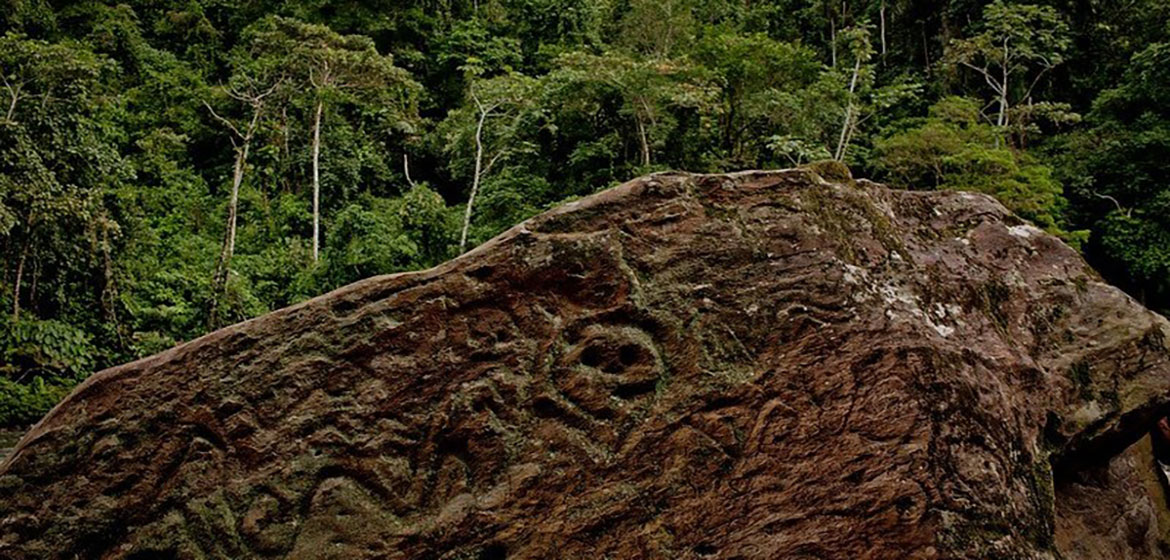Rights recognition crucial to fend off global warming and catastrophic climate change
By Julie Mollins
Indigenous Peoples have had a track record of managing landscapes sustainably for millennia.
However, incursions into their territories, often by settlers involved in natural resource extraction or agriculture, have fractured historic tenure rights, dismantling or putting livelihoods, wildlife and ecosystems at risk.
A new research paper published in journal suggests that rights recognition is crucial for conserving vital carbon sinks and to guard against global warming and catastrophic climate change.
The lack of formal recognition of land tenure rights in government policies has far-reaching implications for the planet, posit scientists in the paper titled “The importance of Indigenous Peoples’ lands for the conservation of intact forest landscapes.”
“Governments should take note that intact forests store considerably more carbon than degraded or fragmented forests, which means they must protected if we’re to make gains in the fight against climate change and biodiversity loss,” said , a senior associate scientist with the Center for International Forestry Research (CIFOR) and a professor of biodiversity and human development at Britain’s .
“Intact forest landscape loss rates have been significantly lower on lands managed by Indigenous Peoples than on other lands,” he said. “This shows the importance of recognizing and supporting their central role in climate change mitigation efforts.”
The research, supported by the and the ’s support to Fa as part of the , reveals that 36 percent of the world’s remaining intact forested landscapes are on Indigenous Peoples’ lands.
LAYING THE GROUNDWORK
Scientists used of “intact forest landscapes” for their study, describing them as “a seamless mosaic of forests and associated natural treeless ecosystems that exhibit no remotely detected signs of human activity or habitat fragmentation and are large enough to maintain all native biological diversity, including viable populations of wide-ranging species.”
Overall, these landscapes, which declined by almost a tenth between 2000 and 2016, comprise 23 percent of global forests. They can provide more than 30 percent of the mitigation action needed to keep global temperatures in check, according to the paper published by Fa and his associates.
The international goal under the 2015 U.N. on climate change is to curb average temperatures and stop them from rising more than 1.5 to 2 degrees Celsius above pre-industrial times.
Some 370 million people worldwide identify as Indigenous due to their descent “from populations who inhabited a country before the time of conquest or colonization and who retain at least some of their own social, economic, cultural and political institutions,” manage or have land tenure rights over 25 percent of the world’s land surface, the paper states.
These lands intersect with about 40 percent of all protected terrestrial areas and 37 percent of remaining natural lands.
To reach their findings, scientists overlaid maps of Indigenous Peoples’ lands and intact forest landscapes to determine the scale of overlap.
From the geospatial data they gathered from 50 countries containing intact forest landscapes and Indigenous Peoples’ lands, which equal more than 90 percent of the world’s intact forest area, the scientists estimated that 23 percent of the total 49.7 million square kilometer forest zone was intact forest landscape. Overall, they found that the forest zone in Indigenous Peoples’ lands was equal to 13.1 million square kilometers or at least a quarter of the total forest zone in the sampled countries.
In turn, these lands represent 36.2 percent of the world’s intact forest landscape area, a total of 11.6 million square kilometers.
“One of the key findings was that the proportion of Indigenous Peoples’ lands mapped as intact forest landscapes was 10.9 percent higher than the proportions of all land outside Indigenous Peoples’ lands, which were mapped as 6.8 percent,” Fa said.
“We also learned that for each country, the percentage of forest zone occupied by intact forest landscapes in Indigenous Peoples’ lands was 20.8 to 23.5 percent higher than in other lands, which were 13.4 to 19.4 percent on average.”
POLICY SHORTCOMINGS
“We find that top-down governance often fails to recognize local interests, rights and values of local communities and Indigenous Peoples, leading to misunderstandings, conflicts and ultimately ecological degradation of forests,” Fa added, pointing out that most global policy frameworks and several multi-lateral environmental agreements do not address the value of intact forest landscapes.
Under the Paris Agreement, for example, only 21 of 131 countries of tropical countries are committed to expanding land tenure rights of Indigenous and local communities.
“Because of the significant intact forest landscape coverage in Indigenous Peoples’ lands, the role of these communities, which represent roughly 5 percent of the global population, as custodians is vital,” he said. “These areas are under threat from infrastructure development, resource extraction and other land-use change activities.”
Granting Indigenous Peoples formal legal titles to their forests is key to slowing forest loss and protecting them from uncontrolled and regulated resource extraction, the paper states.
In addition to the environmental benefits associated with forested landscapes under Indigenous custodianship, they are crucial strongholds for the protection of Indigenous and rural cultures and livelihoods, Fa said.
“Indigenous Peoples have long recognized the importance of conserving and adequately managing intact forest landscapes on their lands, not only because they fulfill their material and non-material cultural needs, but also because they reinforce and re-establish their traditional obligations with the land,” he said.
The U.N.-backed principle of allowing Indigenous Peoples the right to give or withhold “” to any activity that affects their lands, must be upheld for ethical, equitable and beneficial partnerships, the paper states.
Source:
Related to SDG 13: Climate change



